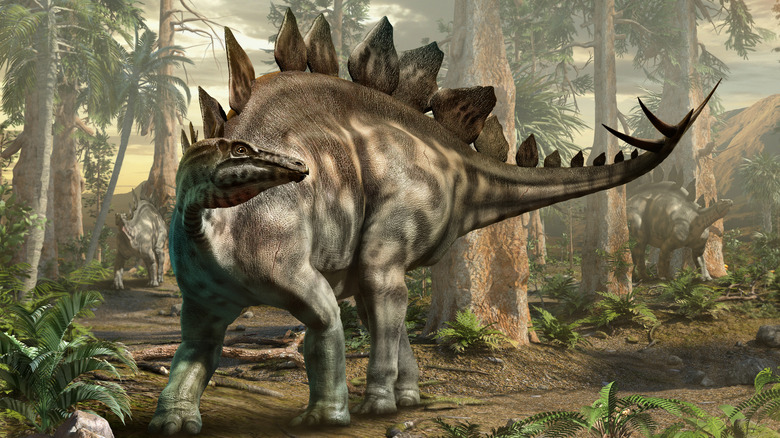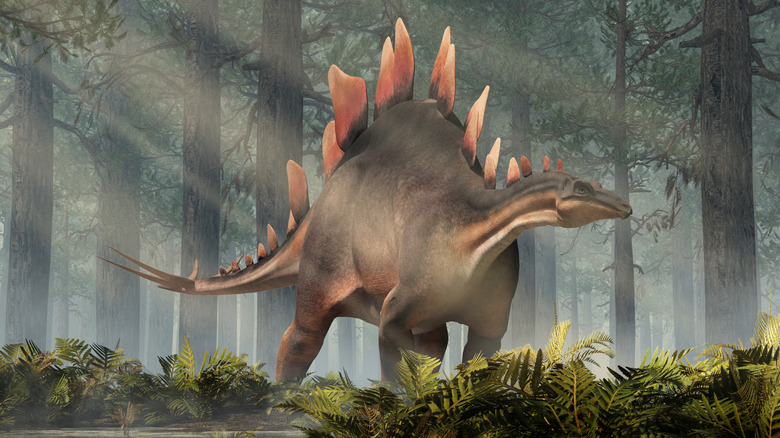What Are The Back Plates On A Stegosaurus Called?
Back in 1677, Robert Plot discovered the first ever dinosaur bone (though humans had likely been turning up such relics for thousands of years without realizing what they were). Back then, of course, such a thing was perplexing to say the least. Humans simply didn't know what dinosaurs were, and as such, Plot decided his giant bone must have belonged to an equally massive proto-human or some sort of elephant species. Since then, we have discovered multiple fossils and learned so much more, developing a detailed understanding of the ancient beasts to which these bones belonged. At this point, we've identified and named roughly 700 dino species, but with the fossil record being incomplete, there are likely countless others we are yet to identify.
For anyone who went through the dinosaur obsession phase growing up, however, there were really only a handful of the creatures that mattered. Top of the list was, of course, the Tyrannosaurus Rex, but every kid knew what a Triceratops, Velociraptor, or Stegosaurus was. While the latter might not have had the visceral appeal of the giant pair of jaws on legs that was the T. Rex (which evidently sounded terrifying, too) the Stegosaurus had its own striking appearance and as a result surely remains one of the most well-known dinos to have ever existed. The most obviously memorable part of Stego anatomy was the row of bony plates running down its back and tail, but even if you were a budding paleontologist as a child, you likely weren't sure what those plates were actually called. Luckily, there's no complex scientific term required as the plates themselves actually have a simple name.
The real name of Stegosaurus plates
Stegosaurus might not have had the appeal of a vicious carnivore like a T. Rex or a Velociraptor, but this comparatively docile herbivore from the Late Jurassic period (one of three time periods in which dinosaurs lived) had such a unique appearance that it has become one of the most well-known dino species regardless. With a spiked tail and a row of plates on its back, the Stegosaurus looked unlike any other dinosaur. Indeed, the species' name is based upon this distinct physiognomy. Stegosaurus means "roof lizard." This is due to Yale paleontologist Othniel Charles Marsh, who first described the Stegosaurus in 1877 based on fossils discovered by Arthur Lakes. Marsh believed the plates laid flat on the top of the creature, hence the "roof" part of the name.
Today, scientists believe these plates actually pointed upwards rather than laying flat, and that rather being anchored to the dino's back bone, they sat within its skin and ran in two rows down the back and tail of the Stegosaurus. These plates are now known as "scutes," and while scientists are unsure exactly what they were used for, many have maintained for centuries that they played some role in defense, protecting Stegosaurus from attacks by larger carnivores. But the scutes, though large, were thinner than you might expect and contained blood vessels, casting doubt on their defensive capabilities. Some experts have suggested these scutes could have helped Stegos recognize one another or aided in temperature regulation. Whatever the case, they certainly helped make the Stegosaurus one of the most visually distinct dinosaurs ever to exist.

